Crate Training
- Maddie Neal
- Aug 31, 2020
- 4 min read
Crate training is the process of introducing your dog to his or her crate or kennel in a positive way so that it become a safe and familiar place for them to go. A crate should be used to give a dog a sense of security, a place of their own that they can retreat to if tired, worried or overwhelmed. It can be used to help with toilet training, travelling, settling in a new area or to keep them safe when unsupervised.
However you can't just buy a crate and shut your dog in when you leave the house and it should never be used as punishment. This will be stressful and may cause your pup to hurt themselves. Crate training takes time and effort as the dog learns that the crate is their personal space and associates it with calm behaviour and feelings of safety.
Size and Set up
The size of the crate is important. It must be large enough for the dog to stand up and move around in but should also be cosy. If you are crate training a puppy you don't want it to be too big as they might see it as an area to toilet in. Some crates are adjustable in size which are perfect for pups as you can increase the size as they grow.
It is important to set the crate up in a quiet part of the house and out of direct sunlight, add some bedding to make it comfy for them and ensure they have access to water. Putting a blanket over the top of the crate can also be comforting for the dog to make the area dark and cosy. When you set up the crate have you dog in another room so you don't spook them and so they are more intrigued and more likely to explore when they come in. Make sure the door is fastened open for now, you won't be shutting your dog in for a long time and if it swings about it could spook your dog.
Training
Once the crate is set up you can let your dog in and let them explore and sniff around at their own pace. Some dogs will go straight in and sniff around, others might be wary of the crate, let them take their time and reward them with treats for showing interest in the crate so they begin to associate it with nice things. If you dog is a bit unsure you can reward them for going near but let them take your time, the crate has to be a positive and calm environment.
When they have explored and have got used to the crate being there you can start encouraging them to go inside by throwing some of their tasty treats in to the crate for them to chase and then allowing them to come out again. Try and make this fun and enjoyable so your dog learns that going into the crate is a great thing. Treats should be dropped into the crate onto the floor rather than given to the dog by hand so they learn to associate the crate with treats rather than looking to your for a reward.
Once your dog happily moving in and out of the crate you can encourage them to stay in and settle by quickly adding more treats into the crate while while they are in there.You can drop treats in through the top or through the door. Start by dropping treats quickly so they are spending a bit longer inside the crate each time. Keep the door open and accessible so your dog can leave at any time. Slowly reduce how often you drop treats and see if your dog stays in the crate and waits for them. They should start learning to wait, and settle, in the crate for the next reward.
Once your dog is happy waiting in the crate for treats you can start practising staying in for longer periods of time and start thinking about closing the door. Start by putting their food or a long lasting chew in the crate for them to eat, do this a few times to make sure they are comfortable spending that time in the crate and then slowly close the door halfway while they are enjoying their food. This can be worrying for them so if they look back unsure or ignore their food and turn around open the door and let them move in and out freely. Keep practising this and slowly closing the door until they are comfortable with the door being closed while they are eating. Start by opening the door as soon as they are finished and then gradually encourage them to wait a bit longer by dropping a few treats into the crate. Try to add treats and reward when they are showing calm behaviours.
From here, it's just practice. Continue to make the crate and enjoyable place to be and to relax. Practice when your dog is already tired and more likely to settle like after exercise, you should start to see them visibly relax and they may even start taking themselves off to the crate to sleep. It's important that your dog see's the crate as their special and safe space, so if you have children or guests be sure to tell them that the dog shouldn't be bothered when in his crate, often dogs use crates to get away situations and that should be respected.
You can continue to give your dog long lasting treats and chews while in the crate so it continues to be a positive place and they enjoy spending more time there. You can use the crate for your dog when you leave the house but this may also need building up as they may be stressed with your leaving. Start by leaving the room for a few minutes while your dog has a tasty chew in their crate and gradually build up. Dogs should be left in the crate for more than a few hours as they can get stiff and need the toilet. Remember to build the time up slowly, go at your dogs pace and make the crate an enjoyable and safe place for your pup.


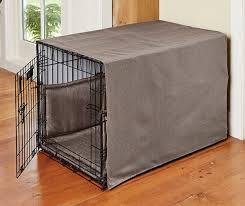
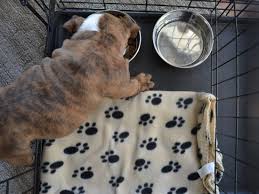
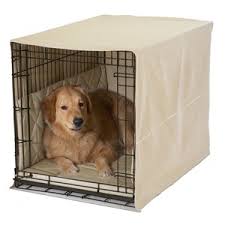

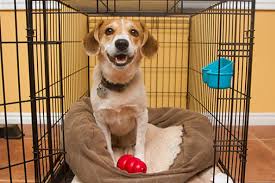
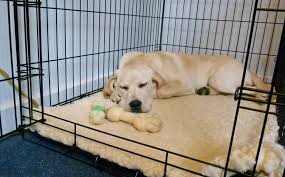



Comments